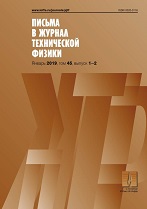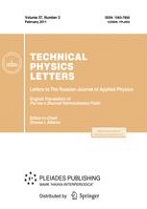|
Impact of pulsed atmospheric-pressure glow discharge on nanometer-thick aluminum films
O. Emelyanov, A. P. Plotnikov, E. G. Feklistov
Peter the Great St. Petersburg Polytechnic University
Abstract:
The effect of a positive pulsed corona discharge on the thin-film cathode surface was studied in atmospheric pressure air gaps of 2–8 mm at voltages of 5–15 kV. Observed current pulses had the following parameters: repetition rate about 10–15 kHz, pulse duration of 300–500 ns, and amplitude of 10–20 mA. It was shown that at relatively low average currents of 20–50 $\mu$A, the discharge transforms into the glow one near the cathode. Due to the discharge channel radial contraction to micrometer scale, Joule heating of the formed cathode layer can lead to a temperature increase up to 1000 K and cause local erosion of the cathode surface. This mechanism should be taken into account when analyzing the interaction of discharge plasma with biological objects.
Keywords:
atmospheric pressure glow discharge, cold plasma, cathode spot, streamer.
Received: 04.09.2020
Revised: 26.11.2020
Accepted: 02.12.2020
Citation:
O. Emelyanov, A. P. Plotnikov, E. G. Feklistov, “Impact of pulsed atmospheric-pressure glow discharge on nanometer-thick aluminum films”, Pisma v Zhurnal Tekhnicheskoi Fiziki, 47:6 (2021), 19–22; Tech. Phys. Lett., 47:3 (2021), 271–274
Linking options:
https://www.mathnet.ru/eng/pjtf4825 https://www.mathnet.ru/eng/pjtf/v47/i6/p19
|


| Statistics & downloads: |
| Abstract page: | 62 | | Full-text PDF : | 29 |
|





 Contact us:
Contact us: Terms of Use
Terms of Use
 Registration to the website
Registration to the website Logotypes
Logotypes








 Citation in format
Citation in format 